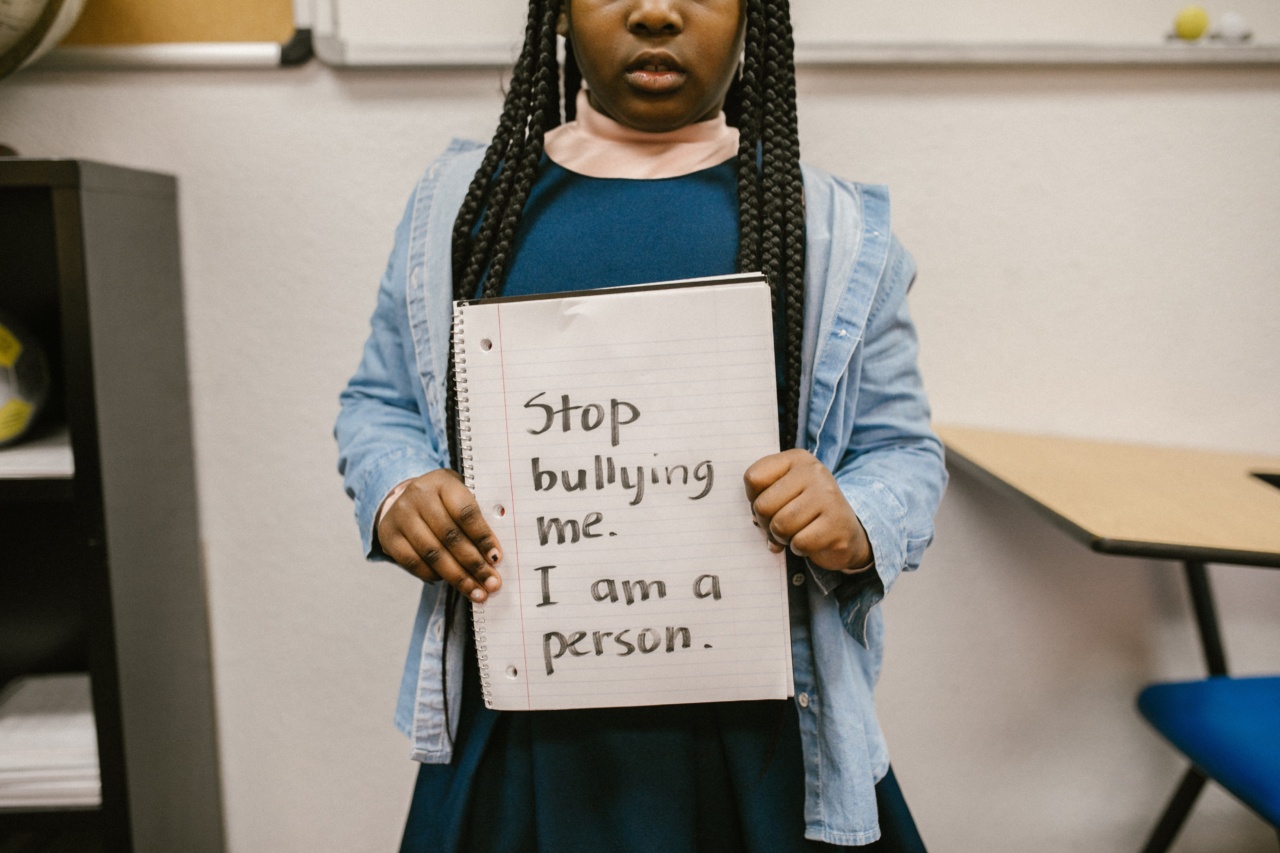Bullying is a common problem that affects many children and teenagers in schools. According to the National Bullying Prevention Center, one in five students in the US has been bullied, and 64% of children who were bullied did not report it.
What is Bullying?
Bullying is defined as an aggressive behavior that is intentional and involves an imbalance of power or strength. This behavior can be repeated over time and includes physical, verbal, or emotional attacks.
The effects of bullying can be damaging to a child’s self-esteem, health, and academic performance.
Common Types of Bullying
There are various forms of bullying that students may experience in schools. These can either be direct or indirect.
Physical Bullying
This involves acts of violence, such as hitting, kicking, or pushing a child. This type of bullying often results in physical injuries or damage to personal property.
Verbal Bullying
This type of bullying involves name-calling, teasing, or making derogatory comments about a child’s race, religion, or physical appearance. This can be particularly damaging to a child’s self-esteem.
Cyberbullying
Cyberbullying involves using technology to harass, intimidate, or embarrass a person. This includes sending text messages, posting negative comments on social media, or spreading rumors about a child online.
Indirect Bullying
Indirect bullying involves excluding a child from a group, spreading rumors, or damaging a child’s reputation.
This type of bullying can be difficult to identify, but it can also have serious consequences for a child’s mental health and social well-being.
What are the Effects of Bullying?
The effects of bullying can be long-lasting and can impact a child’s academic performance, emotional and mental well-being, and physical health.
Academic Performance
Bullying can cause a child to miss school or drop out completely. Children who are bullied may find it difficult to focus in school or to participate in class, leading to poor academic performance.
Emotional and Mental Health
Children who are bullied are at a higher risk of developing depression, anxiety, or low self-esteem. This can have long-term effects on their mental and emotional well-being, leading to reduced quality of life and social isolation.
Physical Health
Children who are bullied can experience physical symptoms such as headaches, stomach aches, and sleep disturbances. This can impact their overall health and well-being, leading to chronic conditions later in life.
How to Stop Bullying in Schools
Stopping bullying in schools requires the cooperation of teachers, parents, and students. Here are some tips that can help to prevent bullying in schools.
Encourage Reporting
It is important to encourage students to report incidents of bullying to adults they trust. Teachers and school administrators should provide a safe and confidential space for students to report bullying incidents.
Promote Positive Behavior
Schools should promote positive behavior by teaching students to respect one another and to celebrate diversity. This can be achieved by organizing classroom lessons or school-wide initiatives that promote kindness, tolerance, and empathy.
Provide Resources
Schools should provide resources to support students who have been bullied, such as counseling services or peer support groups. This can help students to cope with the emotional and mental effects of bullying and to recover from the experience.
Enforce Consequences
Schools should enforce clear consequences for bullying, such as detention, suspension, or expulsion. This can send a clear message that bullying behavior will not be tolerated and can help to prevent future incidents.
Involve Parents
Parents should be involved in preventing bullying in schools. They can work with teachers and school administrators to ensure that their child’s school has a zero-tolerance policy for bullying.
Parents can also talk to their children about the importance of treating others with respect and kindness.
Conclusion
Bullying in schools is a serious problem that can have long-lasting effects on a child’s academic performance, emotional and mental well-being, and physical health.
It is important to take proactive steps to prevent bullying, promote positive behavior, and provide resources for students who have been affected by bullying.































